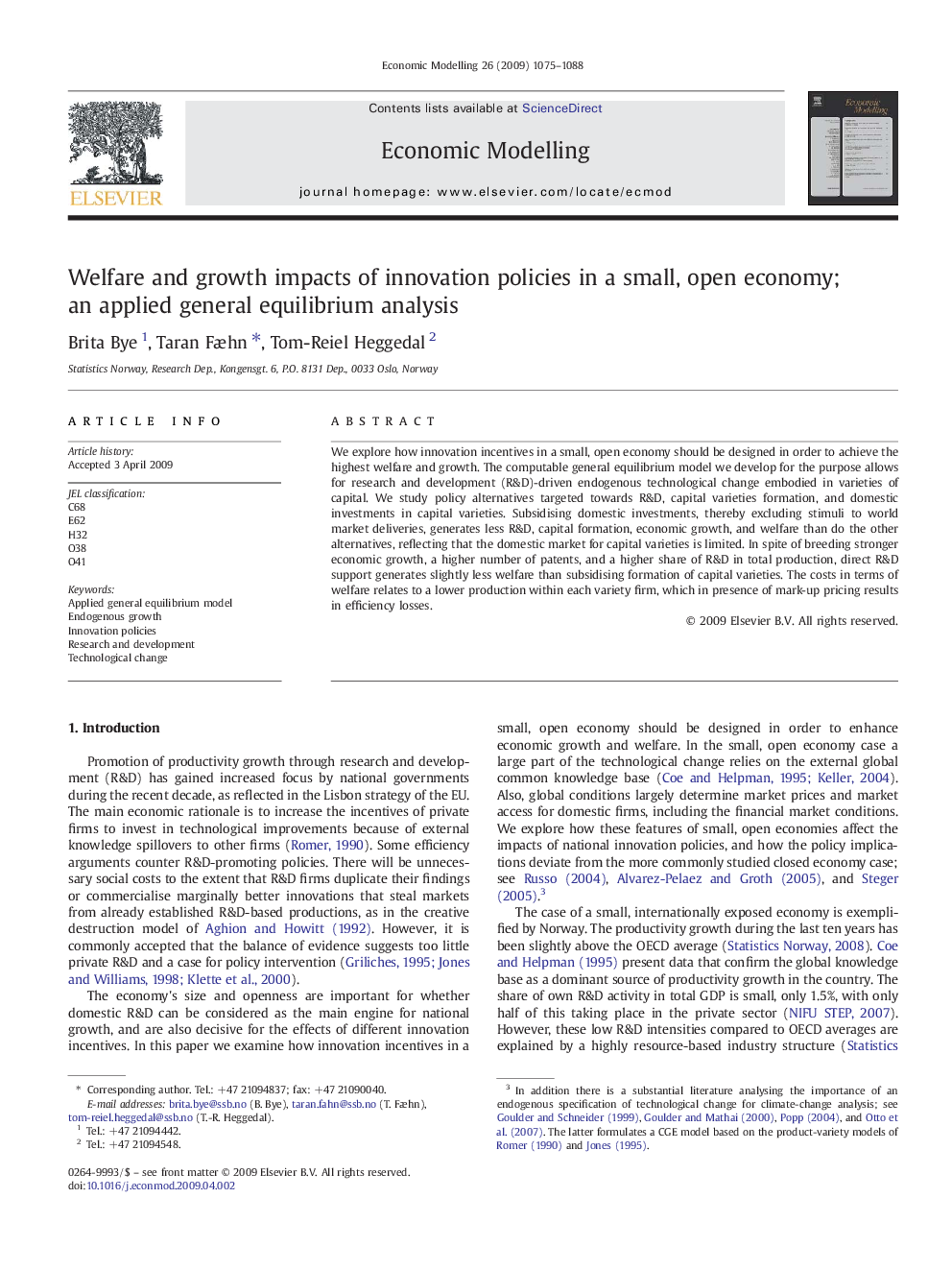| Article ID | Journal | Published Year | Pages | File Type |
|---|---|---|---|---|
| 5055714 | Economic Modelling | 2009 | 14 Pages |
Abstract
We explore how innovation incentives in a small, open economy should be designed in order to achieve the highest welfare and growth. The computable general equilibrium model we develop for the purpose allows for research and development (R&D)-driven endogenous technological change embodied in varieties of capital. We study policy alternatives targeted towards R&D, capital varieties formation, and domestic investments in capital varieties. Subsidising domestic investments, thereby excluding stimuli to world market deliveries, generates less R&D, capital formation, economic growth, and welfare than do the other alternatives, reflecting that the domestic market for capital varieties is limited. In spite of breeding stronger economic growth, a higher number of patents, and a higher share of R&D in total production, direct R&D support generates slightly less welfare than subsidising formation of capital varieties. The costs in terms of welfare relates to a lower production within each variety firm, which in presence of mark-up pricing results in efficiency losses.
Keywords
Related Topics
Social Sciences and Humanities
Economics, Econometrics and Finance
Economics and Econometrics
Authors
Brita Bye, Taran Fæhn, Tom-Reiel Heggedal,
